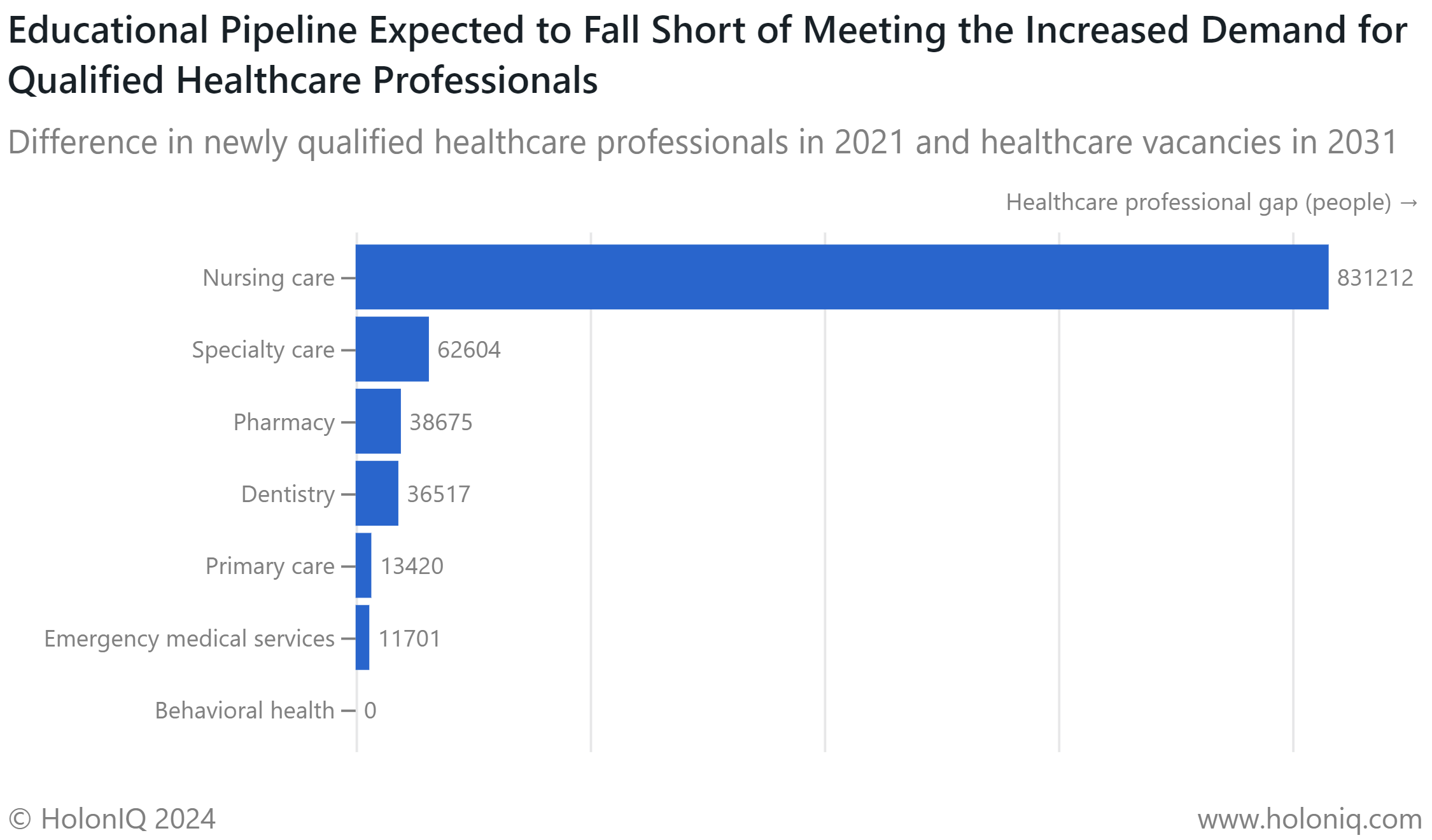🧑🎓 $58k Wage Gap. 800K Nurses Missing. Nuclear Stockpiling.
Chart of the Day #10
For over 5 years, HolonIQ has been visualizing the global impact economy. Now, with more than 1 million charts on Climate Tech, Education, Healthcare, and the Global Economy, we're kicking off 2024 with a new daily newsletter for data-driven, global leaders who want to understand trends in strategic industries.
Today's Topics
- 🧑🎓 Income Inequality. Post-Grad International Students Earn up to $58K Less.
- 👩⚕️ Nursing Shortage. 800,000 US Nurse Shortage.
- ☢️ Nuclear Weapons. 9 Countries Still Stockpiling Nuclear Weapons.
Have feedback or ideas for us? Email hello@holoniq.com — we'd love to hear from you!
🧑🎓 Post-Grad International Students Earn up to $58K Less
In Australia's international education landscape, there is a stark contrast in earnings between domestic and international students, with international post-grads facing significant wage disparity. For instance, in the business and management sector, international undergrads see a $10,000 wage difference, whereas international postgrads see a more significant disparity of $58,000. Post-grad students spend significantly more on education than their undergrad counterparts, but this wage disparity makes post-grad education unattractive to many.
Despite many international graduates choosing to stay in Australia, approximately 50% manage to secure full-time employment, often relegated to low-skilled positions, and approximately half of them earn less than $53,300 annually.
Additionally, the path to permanent residency has become increasingly elusive, forcing one in three graduates into further, often cheaper, studies merely to extend their stay.

👩⚕️ 800,000 US Nurse Shortage
In healthcare, a looming challenge unfolds as the educational pipeline struggles to keep pace with the escalating demand for qualified professionals. Projections reveal a large difference between the number of newly qualified healthcare professionals in 2021 and the anticipated vacancies in 2031.
The nursing sector faces the most significant deficit, with a glaring gap of 831,212 professionals. Following closely, speciality care is poised to experience a deficit, with a notable shortfall of 62,604 professionals between 2021 and the projected healthcare vacancies in 2031.

☢️ 9 Countries Still Stockpiling Nuclear Weapons
In the realm of nuclear weapons, global pursuits of nuclear weapons are on the decline; however, existing stockpiles persist in some countries.
In the era of World Wars and Cold Wars, active considerations for nuclear weapons, pursuits and stockpiles of nuclear weapons peaked, with more than 18 nations expressing interest.
Fast forward in time, and this number can be seen to have cut down significantly. However, as of 2022, nine countries are still known to possess nuclear weapons, which reflects a complex geopolitical landscape. Notably, one country is actively considering and pursuing nuclear capabilities, adding an element of concern.

Thank you for reading. Have a great week ahead!
Have some feedback or want to sponsor this newsletter? Let us know at hello@holoniq.com
